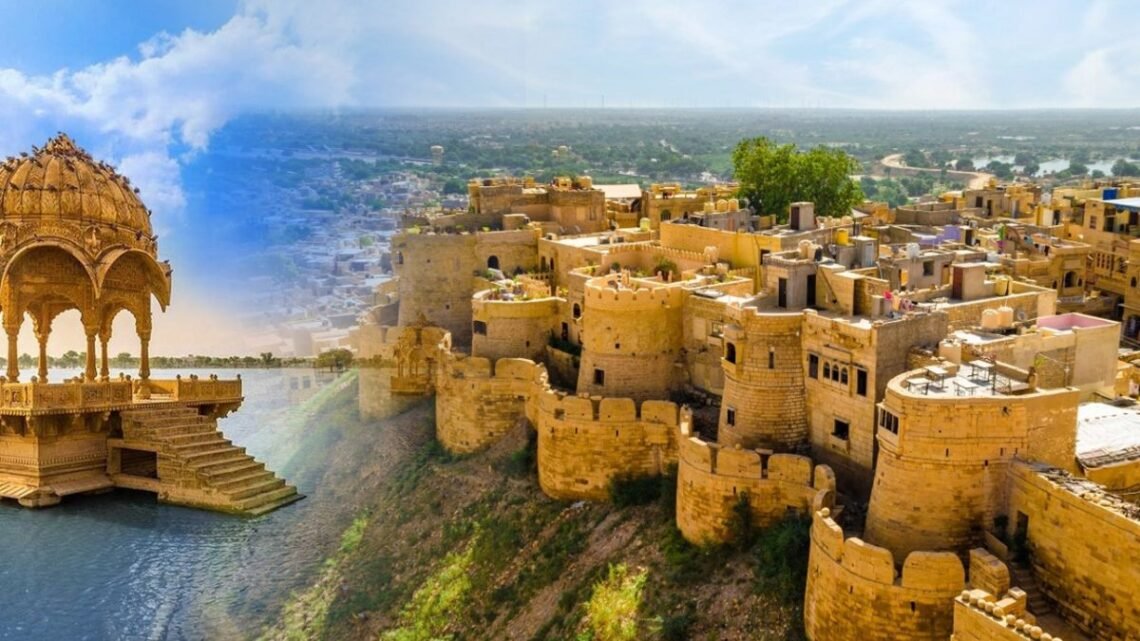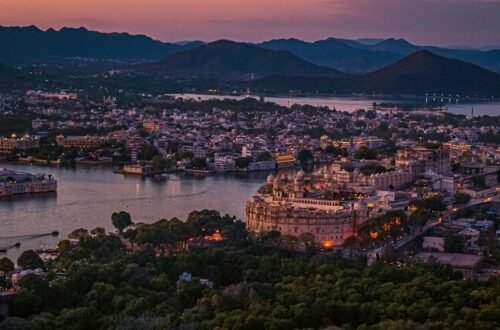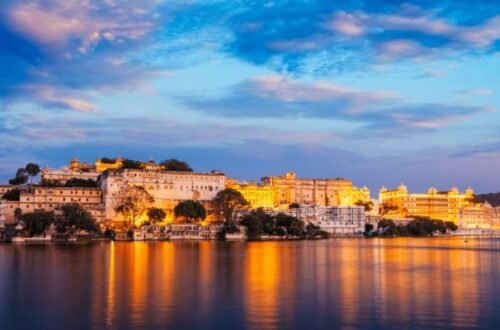Jaisalmer, often called the Golden City of Rajasthan, is more than just a destination—it’s a living museum of history, culture, and tradition. With its golden fort walls, grand havelis, bustling bazaars, and sweeping sand dunes, Jaisalmer embodies the royal spirit of Rajasthan. Walking its alleys and riding across its deserts is like stepping back into the pages of history while enjoying modern comforts.
Here’s how you can explore Jaisalmer’s living history on your royal Rajasthan trail.
Jaisalmer Fort: A Living Legacy
Built in 1156 by Rawal Jaisal, Jaisalmer Fort is one of the rare “living forts” in the world. Unlike many forts that serve only as monuments, this one houses thousands of residents, shops, temples, and cafés.
Inside the fort, don’t miss:
- Raj Mahal (Royal Palace): With its ornate balconies and royal artifacts.
- Jain Temples: Exquisite marble carvings that tell spiritual stories.
- Manak Chowk: A bustling market square alive with color and trade.
At sunset, the fort glows golden, reflecting the desert sun and earning Jaisalmer its nickname.
Havelis: Merchant Mansions of Grandeur
Jaisalmer’s prosperity during the Silk Route era is visible in its havelis—lavish sandstone mansions built by wealthy traders.
- Patwon Ki Haveli: A cluster of five havelis filled with murals and carvings.
- Salim Singh Ki Haveli: Notable for its peacock-shaped roof.
- Nathmal Ki Haveli: An asymmetrical masterpiece built by two architect brothers.
These havelis showcase Jaisalmer’s artistry and living history through stone.
Temples and Shrines: Spiritual Chapters
Jaisalmer’s temples are as much about culture as they are about devotion.
- Lodurva Jain Temples: Intricate shrines located just outside the city.
- Laxminath Temple: Blending Rajput and Mughal architectural styles.
- Small Shrines: Found across lanes, offering glimpses of everyday spirituality.
Exploring these temples reveals how faith shaped the city’s rhythm of life.
Bazaars: The Pulse of the City
The bazaars of Jaisalmer are where its living history thrives.
- Sadar Bazaar: Famous for embroidered fabrics, puppets, and leather goods.
- Bhatia Bazaar: Known for jewelry and household items.
- Pansari Bazaar: A treasure trove of souvenirs.
Walking through these markets, you’ll meet artisans who still practice crafts passed down through generations.
Desert Adventures: Living the Nomadic Life
Beyond its walls, Jaisalmer’s desert completes its story. Riding across the dunes recreates the journeys of nomads and traders who once crossed these lands.
- Camel Safari: A Camel safari in Jaisalmer offers a traditional way to experience the desert, especially at sunset.
- Jeep Safari: For those seeking speed and adrenaline across the dunes.
- Cultural Nights: Folk music, Kalbeliya dance, and bonfires keep desert traditions alive.
Starry Nights in Swiss Tents
After exploring forts and bazaars, spending a night in Luxury Swiss Tents in Jaisalmer is the ultimate royal experience. These tents provide the charm of desert camping with modern comforts:
- Spacious interiors and attached bathrooms.
- Bonfires with folk performances.
- Traditional Rajasthani feasts under the stars.
Sleeping under the desert’s star-studded sky connects you to Jaisalmer’s timeless beauty.
Where to Stay in the Golden City
Balancing heritage exploration with relaxation is important. A Swimming Pool hotel in Jaisalmer offers modern luxury after days of sightseeing. Enjoy cooling dips, rooftop dining with fort views, and Rajasthani hospitality that makes you feel like royalty.
Flavors of Royal Rajasthan
Jaisalmer’s cuisine is another chapter of its history. Don’t miss:
- Dal Baati Churma: The state’s signature dish.
- Ker Sangri: A tangy preparation unique to the desert.
- Laal Maas: Fiery mutton curry once favored by kings.
- Ghewar & Moong Dal Halwa: Sweet delights for special occasions.
Many desert camps serve these dishes, blending culinary heritage with the magic of the dunes.
Best Time to Explore Jaisalmer
The best season for exploring Jaisalmer’s living history is October to March. Winter evenings are cool and perfect for desert camping, while February brings the vibrant Desert Festival, filled with camel races, folk music, and cultural showcases.
Travel Tips for Your Royal Trail
- Stay 3–4 Days: To balance city exploration with desert experiences.
- Hire Local Guides: Their stories add depth to every fort and haveli.
- Dress Smart: Light cottons for day, warm clothes for desert nights.
- Book in Advance: Camps and safaris fill up during peak season.
- Respect Heritage: Follow guidelines in temples and historic sites.
Conclusion
Exploring Jaisalmer is like walking through a living history book. From golden fort walls and merchant havelis to vibrant bazaars and desert camps, every corner tells a story of resilience, artistry, and royalty.
Whether you’re bargaining in bazaars, admiring Jain temples, riding dunes on a Camel safari in Jaisalmer, cooling off at a Swimming Pool hotel in Jaisalmer, or gazing at the stars from Luxury Swiss Tents in Jaisalmer, the Golden City ensures your royal Rajasthan trail is unforgettable.





